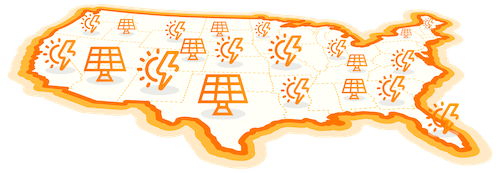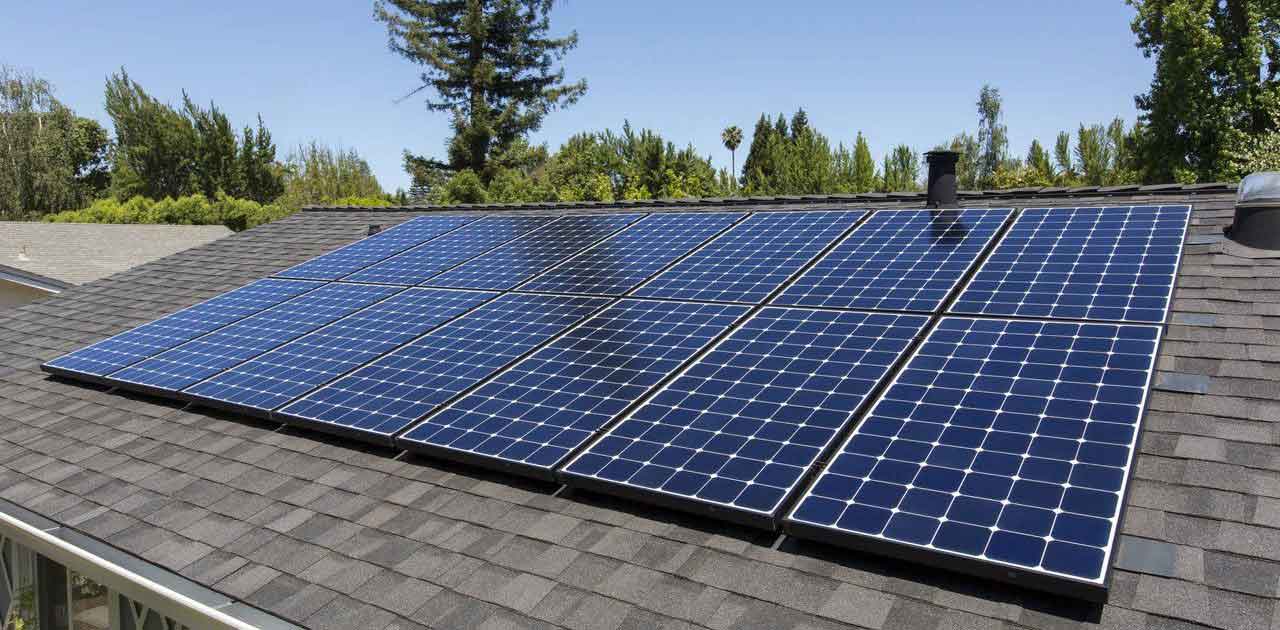Will solar panels increase your home value?
Savvy homeowners, potential buyers and appraisers know that solar panels and battery storage can increase your home’s value on the real estate market. According to research from the National…
It will decrease to 26% for systems installed in 2033 and to 22% for systems installed in 2034.
Installing solar is a long term investment. If you're considering buying a solar system for your home, then the time is now.

Even if your state doesn't offer solar incentives, you may still be eligible for Solar Renewable Energy Credits (SRECs).
Some states allow you to earn and sell credits for the electricity your solar system produces.
The 2005 tax credit is helping more homeowners to generate solar energy, regardless of which state you are in.
We match you with the best local contractors for the job. No high-pressure sales calls or spam.
Get multiple quotes from our solar experts! We don't ask you for any payment information.
We connect you with only the highest-rated, licensed, and insured solar experts.
If you are new to shopping for Solar Panels, you are probably noticed there are a variety of options to choose from. So how can you know what works best for you? Each type of Solar Panel has different efficiency levels, not to mention variable costs depending on your budget and energy requirements. When you submit an enquiry with us, we will review your requirements and match you with a local installer who fits your budget and energy requirements.
Savvy homeowners, potential buyers and appraisers know that solar panels and battery storage can increase your home’s value on the real estate market. According to research from the National…
Whether you decide to buy your solar panels outright or lease them you’ll still get the same, clean solar electricity powering your home. But the finances and ownership of your solar energy system…
There are only 4 types of Solar Panels readily available to homeowners and each panel type has been designed to provide homeowners with specifications to suit their energy consumption.
The most popular options are:
There is a growing demand for Solar Roof Shingles. They are the solution for homeowners who prefer to keep their Solar installation discreet. They blend nicely with the architecture of the home and appear as a structural component of asphalt shingle roof designs. Solar shingles are as durable as regular asphalt shingles and protect your roof and home just as well. For each solar shingle installed, they can produce anywhere from 13 to 63 watts of electricity.
You’ve probably heard of thin film types of solar panels, too. They are newer and less frequently used for homes. But they are growing in popularity.
The thin film gets its name from how it’s produced—layers of semiconductor materials (silicon, cadium telluride, and copper indium gallium selenide) rolled out as a film on a surface. Thin film solar tends be less efficient than crystalline solar panels, and it requires a lot of roof space. It also tends to degrade more quickly, so companies may offer shorter warranties to homeowners.
But thin film is also inexpensive and more flexible than crystalline solar cells. It can be manufactured into shingles. So for those who don’t like the aesthetics of solar panels, thin film is a good alternative. There may be local solar rebate incentives for installing these types of solar panel
Keep in mind that solar manufacturing is a very competitive field. Researchers keep coming up with ways to make solar cells more efficient. The latest technologies use solar inks, dyes, mirrors, and plastics. Take a look at this chart by the National Renewable Energy Laboratory to see how far and how fast solar cell efficiencies have grown.
Solar panels are made up of crystalline cells. A typical home rooftop solar panel contains up to 40 solar cells. There are two main types of solar panel cells: polycrystalline and monocrystalline. It’s good to understand the difference between the two because your choice will determine cost and the amount of roof space your solar installation requires.
Polycrystalline types of solar panels were developed first. These cells can be recognized within a solar panel for their rectangular shape, created when silicon is melted and poured into a mold. The industry manufactures polycrystalline solar very effectively, as little silicon is wasted in the process. This contributes to the competitive pricing of installing polycrystalline solar panels or even solar leasing costs.
But polycrystalline cells are not as heat tolerant or efficient as the monocrystalline cells More specifically, they don’t make as much electricity from the sun that shines on them. This can affect things like the amount of electricity you can sell from solar energy.
Monocrystalline solar panel cells tend to achieve higher levels of efficiency because they are made of more pure silicon. (You’ll notice a uniformity to their coloring.) Their cylindrical shape also helps these cells achieve higher efficiency. When choosing between a monocrystalline and polycrystalline solar panel system, it will be important to find your solar sun number score to find out how much potential your system will have with your location and amount of sunlight it receives.
To make them, solar manufacturers carve silicon ingot into wafers. In the process, they smooth and round the cell edges. Because their form and content helps them produce more electricity, you need fewer of them.
But monocrystalline cells also cost more to manufacture than polycrystalline solar panels, so they are more expensive to purchase. On the other hand, they tend to last longer, and they often come with long warranties. Both of the aforementioned types of solar panels can be installed on your roof or by installing solar panel mounts in a designated area of your land.
Solar heaters convert sunlight into energy. Whether you’re planning to heat your water or air, you’ll no longer need to spend money on fossil fuels to achieve this. At the very most, you’ll have to pay to run a pump or fan for the system, but that cost is very affordable when compared to running a furnace. Not only are Solar Heaters more affordable, they are also kinder to the environment when compared to conventional heating systems.
A Solar Water Heater provides homes with hot water for showering, bathing or washing laundry. They rely on solar panels otherwise known as collectors. Collectors convert sunlight into heat to warm up water for storage. As the sun beats down on the collectors (dark colored heat absorbers) they heat up, warming the water that passes through them, which then flows to a storage tank to await usage. Because very little maintenance is needed for solar water heaters, they are more affordable than a conventional boiler system.
A Solar Pool Heater is very similar to a Home Water Heater, except that they are integrated into the pool's existing filter piping. Pool water is pumped through the filter and then through the solar collector(s), where it's heated before being recirculated into the pool. In hot climates, the collectors can also be used to cool the pool during peak summer months by circulating the water through the collectors at night.
A Solar Air Heater is essentially an insulated box with a glass front and a dark absorber. When sunlight shines on the box, it heats up inside. An air duct then pumps cooler air from the room into the box for heating. The warmer air then recirculates back into the room and raises the temperature to a comfortable level. This is a reliable system that provides a stable supply of heat from direct sunlight. While the air can naturally flow through the pipes without a fan or pump, an exhaust fan is typically used to further accelerate the airflow.
Please Note: Solar heaters are complex systems which require a certified professional for installation. We will find you the right professional installer from your local area. We will do the legwork and contact them on your behalf. Not only will this save you time, but will ensure a flawless installation process from start to finish.
Going Solar means you're protecting yourself against big utility providers and potential price-hikes! You'll receive a lower utility bill each month. You can calculate your return on investments by calculating the amount you spent for installation and then figure out the amount you will save on electricity bills. This will show your unique time frame for recovering your initial costs. Remember that solar tends to be more efficient where electricity is expensive and sunshine is abundant.
This is a solar incentive that allows you to store energy within the power grid. When your solar panels produce more electricity than you need, the excess energy is sent to the grid in exchange for credits. In states where net metering is in effect, home owners are selling solar energy to their local utility energy providers. This lowers electricity bills, shortens payback periods and raises savings.
There are several payment options that bundle solar installation costs into a consumer’s electric bill. Solar leases allow the homeowner to install solar panels without paying anything (or much) up front reducing the overall solar panel cost. After the panels are installed, the homeowner pays only a flat monthly fee for the cost to install, which are spread out over time.
It is worth noting that under most solar lease arrangements, the solar company usually keeps any incentives that are associated with owning the solar panels. But the consumer gains other advantages. The solar company may offer a monthly fee below the utility rate, or one that doesn’t rise as utility rates do. At the end of the contract, homeowners can renew, purchase the system, or have the solar panel equipment removed.
These types of third-party financing arrangements have a lot of benefits for consumers—the best being no large out-of-pocket investment. And the solar system becomes relatively affordable from day one. Not surprisingly, these agreements have been a big factor in driving today’s solar energy installation boom.
Solar power may be simple in concept, but in application it can be bewildering. And the best approach for one homeowner isn’t necessarily the best for another. Take the time to gather the pertinent information —about house size, local solar insolation, existing electric rates, and consumption. It’s worth it in figuring out your potential solar cost for your home. Solar panels can not only power your home’s electricity for appliances but can also be fitted for other benefits such as heating and cooling your home with solar, solar water heating, and even heating a pool with solar energy.









